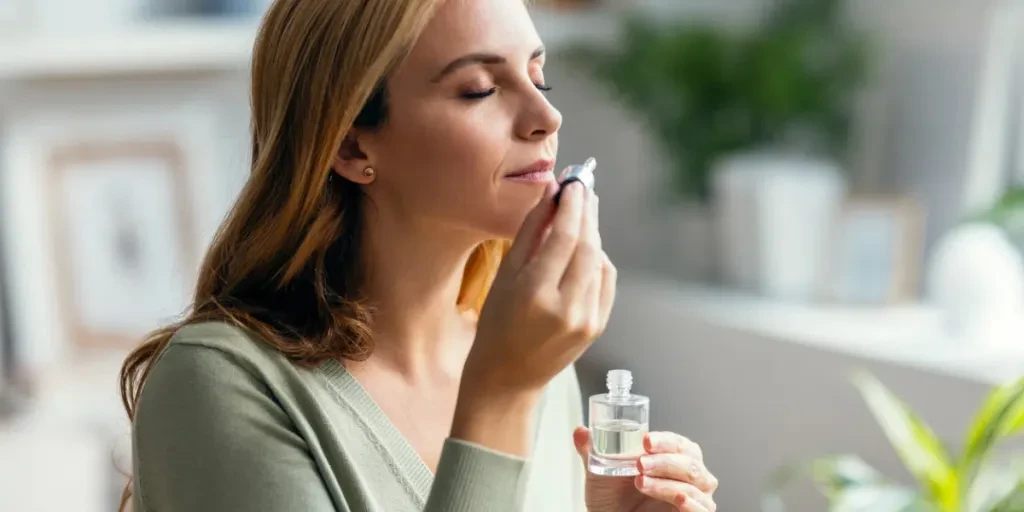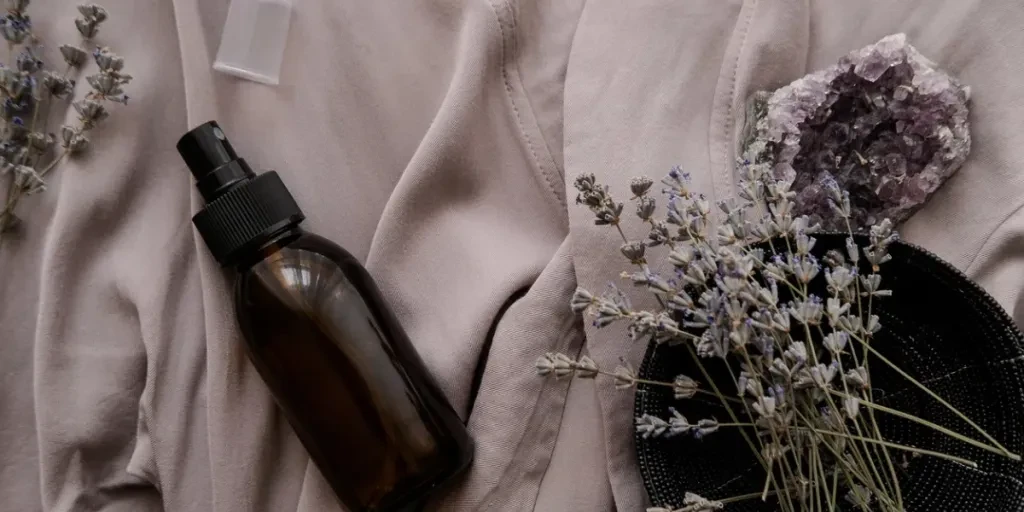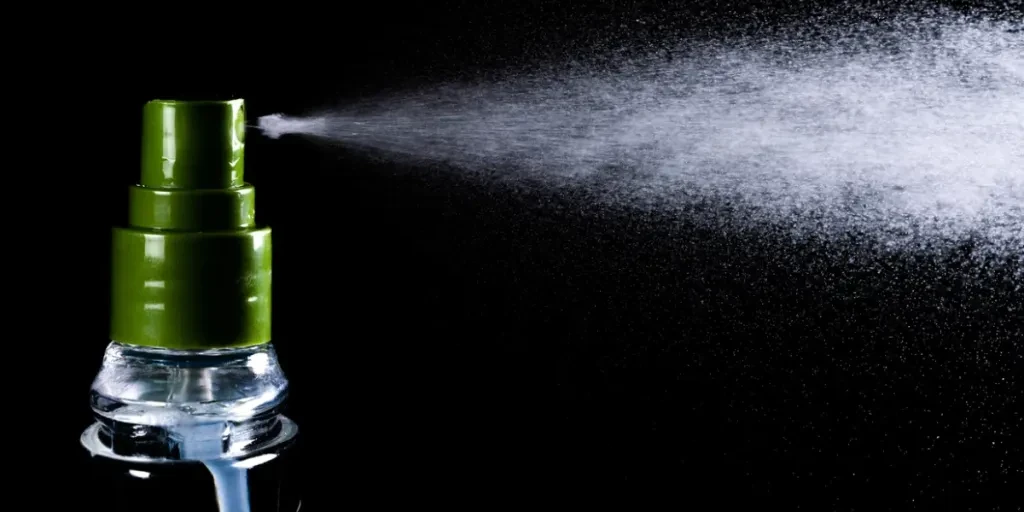Dalam dunia kecantikan dan perawatan pribadi yang terus berkembang, parfum tubuh telah muncul sebagai pemain penting, memikat indera dan hati konsumen di seluruh dunia. Saat kita melangkah ke tahun 2025, daya tarik parfum tubuh terus tumbuh, didorong oleh perpaduan tradisi, inovasi, dan keinginan untuk mengekspresikan diri. Panduan ini membahas faktor-faktor yang mendorong popularitas parfum tubuh, menawarkan wawasan tentang tren dan dinamika pasar yang membentuk lanskap wewangian ini.
Daftar Isi:
– Memahami Lonjakan Popularitas Parfum Tubuh
– Menjelajahi Jenis Parfum Tubuh yang Populer
– Mengatasi Masalah Konsumen dalam Pemilihan Parfum Tubuh
– Inovasi dan Produk Baru dalam Industri Parfum
– Penutup: Poin-poin Penting dalam Mencari Parfum Badan
Memahami Meningkatnya Popularitas Parfum Tubuh

Apa yang Membuat Parfum Tubuh Menjadi Komoditas yang Laris?
Parfum tubuh telah melampaui perannya sebagai penambah aroma dan menjadi simbol identitas dan gaya pribadi. Pasar parfum global, yang mencapai nilai USD 37.6 miliar pada tahun 2023, diproyeksikan akan melonjak menjadi USD 60.1 miliar pada tahun 2032, tumbuh pada CAGR sebesar 5.3%. Pertumbuhan ini didorong oleh meningkatnya permintaan konsumen akan aroma yang unik dan tahan lama, serta meningkatnya tingkat pendapatan yang dapat dibelanjakan, terutama di negara-negara berkembang. Merek parfum memanfaatkan permintaan ini dengan menawarkan beragam wewangian, mulai dari wewangian bunga dan buah hingga wewangian oriental dan kayu, yang memenuhi berbagai kesempatan dan selera pribadi.
Tren Media Sosial dan Tagar yang Mendorong Permintaan
Pengaruh media sosial terhadap perilaku konsumen tidak dapat dilebih-lebihkan. Platform seperti Instagram dan TikTok telah menjadi alat yang ampuh bagi merek parfum untuk menjangkau dan melibatkan audiens mereka. Tagar seperti #FragranceOfTheDay, #PerfumeCollection, dan #ScentOfTheSeason telah mengumpulkan jutaan posting, menciptakan komunitas penggemar parfum yang dinamis. Tren ini tidak hanya meningkatkan kesadaran tetapi juga menginspirasi konsumen untuk mengeksplorasi dan berinvestasi dalam wewangian baru. Munculnya influencer kecantikan dan dukungan selebriti semakin memperkuat efek ini, dengan banyak konsumen berusaha meniru gaya dan preferensi kepribadian favorit mereka.
Menyelaraskan dengan Tren Kecantikan dan Kesehatan yang Lebih Luas
Meningkatnya penekanan pada kesehatan dan perawatan diri telah berdampak signifikan pada industri kecantikan, dan parfum tubuh tidak terkecuali. Konsumen semakin mencari produk yang selaras dengan pendekatan holistik mereka terhadap kesehatan. Hal ini telah menyebabkan lonjakan permintaan untuk wewangian alami dan berkelanjutan, dengan banyak merek yang menggabungkan bahan-bahan yang bersumber secara etis dan kemasan yang ramah lingkungan. Menurut laporan profesional, tren menuju parfum yang bebas dari kekejaman, vegan, dan organik semakin meningkat, yang mencerminkan pergeseran yang lebih luas menuju konsumerisme yang sadar. Selain itu, konsep wewangian yang dipersonalisasi dan dibuat khusus menjadi semakin populer, yang memungkinkan individu untuk menciptakan aroma unik yang sesuai dengan identitas dan preferensi pribadi mereka.
Sebagai kesimpulan, pasar parfum tubuh siap untuk terus tumbuh, didorong oleh preferensi konsumen yang terus berkembang, pengaruh media sosial, dan keselarasan dengan tren kecantikan dan kesehatan yang lebih luas. Saat kita memasuki tahun 2025, daya tarik parfum tubuh tetap kuat, menawarkan kemungkinan tak terbatas untuk ekspresi diri dan kenikmatan indrawi.
Menjelajahi Jenis Parfum Tubuh yang Populer

Eau de Parfum vs. Eau de Toilette: Perbedaan Utama
Eau de Parfum (EDP) dan Eau de Toilette (EDT) adalah dua jenis parfum tubuh yang paling populer, masing-masing dengan karakteristik berbeda yang sesuai dengan preferensi konsumen yang berbeda. EDP biasanya mengandung konsentrasi minyak wangi yang lebih tinggi, berkisar antara 15% hingga 20%, yang menghasilkan aroma yang lebih kuat dan tahan lama. Hal ini menjadikan EDP pilihan yang ideal untuk dipakai di malam hari atau acara-acara khusus yang membutuhkan aroma yang lebih kuat. Di sisi lain, EDT memiliki konsentrasi minyak wangi yang lebih rendah, biasanya antara 5% dan 15%, sehingga menghasilkan aroma yang lebih ringan dan menyegarkan yang cocok untuk penggunaan sehari-hari.
Bagi pembeli bisnis, memahami perbedaan ini sangat penting saat memilih produk untuk persediaan mereka. EDP, dengan konsentrasi minyak yang lebih tinggi, sering kali dijual dengan harga yang lebih tinggi tetapi menawarkan keawetan yang lebih baik, sehingga menarik bagi konsumen yang mencari wewangian yang tahan lama. EDT, karena lebih terjangkau dan serbaguna, dapat menarik basis pelanggan yang lebih luas yang mencari wewangian untuk dipakai sehari-hari. Merek seperti Chanel dan Dior menawarkan versi EDP dan EDT dari wewangian ikonik mereka, yang memungkinkan pengecer untuk memenuhi berbagai kebutuhan konsumen.
Parfum Alami dan Organik: Pro dan Kontra
Permintaan parfum alami dan organik telah melonjak dalam beberapa tahun terakhir, didorong oleh meningkatnya kesadaran konsumen akan masalah kesehatan dan lingkungan. Parfum alami dibuat menggunakan bahan-bahan yang berasal dari tanaman, bunga, dan sumber alami lainnya, sementara parfum organik melangkah lebih jauh dengan memastikan bahan-bahan ini ditanam tanpa pestisida atau pupuk sintetis. Merek seperti Haeckels dan Abel Fragrances berada di garis depan gerakan ini, menawarkan produk yang menarik bagi konsumen yang peduli lingkungan.
Namun, ada kelebihan dan kekurangan yang perlu dipertimbangkan. Parfum alami dan organik sering dianggap lebih aman dan ramah lingkungan, yang dapat menjadi nilai jual yang signifikan. Parfum alami dan organik juga cenderung memiliki profil aroma yang unik dan kompleks yang membedakannya dari wewangian sintetis. Di sisi negatifnya, parfum ini mungkin memiliki masa simpan yang lebih pendek dan daya tahan yang lebih rendah di kulit karena tidak adanya bahan penstabil sintetis. Selain itu, biaya untuk mendapatkan bahan-bahan alami berkualitas tinggi dapat mengakibatkan harga eceran yang lebih tinggi.
Parfum Niche dan Artisan: Segmen Pasar yang Berkembang
Parfum khusus dan parfum artisanal merupakan segmen yang sedang berkembang di pasar parfum, yang dicirikan oleh komposisi yang unik dan berkualitas tinggi serta jumlah produksi yang terbatas. Parfum ini sering kali menggunakan bahan-bahan yang langka dan eksotis, dibuat oleh ahli parfum yang mengutamakan seni daripada daya tarik massal. Merek seperti Byredo dan Le Labo telah mendapatkan pengikut setia dengan menawarkan aroma khas yang menonjol di pasar yang ramai.
Bagi pembeli bisnis, menyediakan parfum khusus dan parfum artisanal dapat menarik pelanggan cerdas yang mencari pengalaman wewangian eksklusif dan personal. Produk-produk ini sering kali hadir dengan cerita menarik dan kemasan mewah, sehingga meningkatkan daya tariknya sebagai hadiah premium. Namun, harga yang lebih tinggi dan ketersediaan terbatas mungkin memerlukan pendekatan pemasaran yang terarah untuk menjangkau audiens yang tepat.
Mengatasi Masalah Konsumen dalam Pemilihan Parfum Badan

Umur Panjang dan Sillage: Apa yang Perlu Diketahui Pembeli
Ketahanan dan sillage merupakan faktor penting yang memengaruhi kepuasan konsumen terhadap parfum tubuh. Ketahanan mengacu pada seberapa lama wewangian bertahan di kulit, sedangkan sillage menggambarkan jejak aroma yang tertinggal saat pemakainya bergerak. Parfum dengan ketahanan tinggi dan sillage yang kuat sering kali lebih disukai karena dampak dan kehadirannya yang tahan lama.
Pembeli bisnis harus mempertimbangkan atribut-atribut ini saat memilih parfum untuk persediaan mereka. Wewangian dengan konsentrasi minyak esensial yang tinggi, seperti EDP, biasanya menawarkan keawetan dan sillage yang lebih baik. Merek seperti Tom Ford dan Jo Malone dikenal karena aromanya yang tahan lama dan tetap kuat sepanjang hari. Memberikan informasi terperinci tentang karakteristik ini dapat membantu konsumen membuat keputusan pembelian yang tepat dan meningkatkan kepuasan secara keseluruhan.
Sensitivitas dan Alergi: Menemukan Pilihan Hipoalergenik
Sensitivitas dan alergi merupakan masalah umum di antara pengguna parfum, sehingga penting bagi pengecer untuk menawarkan pilihan parfum hipoalergenik. Parfum hipoalergenik diformulasikan untuk meminimalkan risiko reaksi alergi, sering kali dengan menghindari bahan pengiritasi umum seperti wewangian sintetis, alkohol, dan minyak esensial tertentu. Merek seperti Phlur dan Henry Rose mengkhususkan diri dalam menciptakan parfum hipoalergenik yang sesuai untuk kulit sensitif.
Saat mencari parfum hipoalergenik, pembeli bisnis harus mencari produk yang telah diuji secara dermatologis dan disertifikasi oleh otoritas terkait. Pelabelan yang jelas dan daftar bahan yang transparan juga dapat membantu membangun kepercayaan dan keyakinan konsumen. Menawarkan berbagai pilihan hipoalergenik dapat menarik basis pelanggan yang lebih luas, termasuk mereka yang memiliki kulit sensitif atau alergi tertentu.
Harga vs. Kualitas: Mencapai Keseimbangan yang Tepat
Menyeimbangkan harga dan kualitas merupakan pertimbangan utama bagi konsumen dan pembeli bisnis di pasar parfum. Meskipun parfum berkualitas tinggi sering kali memiliki harga yang lebih mahal, parfum tersebut dapat memberikan keawetan, aroma yang lebih lembut, dan kepuasan secara keseluruhan yang lebih baik. Namun, tidak semua konsumen bersedia atau mampu berinvestasi pada wewangian premium, sehingga penting untuk menawarkan berbagai pilihan dengan harga yang berbeda-beda.
Pembeli bisnis harus mengevaluasi rasio biaya terhadap kualitas parfum untuk memastikan bahwa parfum tersebut memberikan nilai kepada pelanggan. Merek seperti Zara dan The Body Shop menawarkan wewangian yang terjangkau namun berkualitas tinggi yang menarik bagi konsumen yang sadar anggaran. Dengan menyediakan campuran pilihan premium dan ramah anggaran, pengecer dapat memenuhi beragam preferensi konsumen dan memaksimalkan penjualan.
Inovasi dan Produk Baru dalam Industri Parfum

Inovasi Parfum Berkelanjutan dan Ramah Lingkungan
Keberlanjutan telah menjadi tren penting dalam industri parfum, dengan merek-merek semakin berfokus pada praktik dan produk yang ramah lingkungan. Ini termasuk menggunakan bahan-bahan yang bersumber secara berkelanjutan, mengurangi limbah kemasan, dan menerapkan proses produksi yang ramah lingkungan. Merek-merek seperti Lush dan Aveda memimpin dengan komitmen mereka terhadap keberlanjutan, menawarkan produk-produk yang menarik bagi konsumen yang peduli lingkungan.
Bagi pembeli bisnis, berinvestasi dalam parfum berkelanjutan dapat meningkatkan reputasi merek dan menarik segmen pelanggan yang semakin peduli lingkungan. Menyoroti atribut berkelanjutan dari produk-produk ini, seperti kemasan yang dapat terurai secara hayati atau produksi yang netral karbon, juga dapat berfungsi sebagai nilai jual yang unik.
Kemajuan Teknologi dalam Formulasi Parfum
Kemajuan teknologi merevolusi formulasi wewangian, memungkinkan terciptanya wewangian yang lebih kompleks dan inovatif. Bioteknologi, misalnya, memungkinkan produksi bahan-bahan langka dan eksotis yang berkelanjutan, sementara AI dan pembelajaran mesin digunakan untuk memprediksi preferensi konsumen dan mengoptimalkan komposisi wewangian. Merek seperti Givaudan dan Firmenich berada di garis depan inovasi ini, mendorong batasan wewangian tradisional.
Pembeli bisnis harus terus mendapatkan informasi tentang perkembangan teknologi ini untuk mengidentifikasi peluang baru dan tetap kompetitif. Berkolaborasi dengan perusahaan parfum yang inovatif juga dapat memberikan akses ke produk canggih yang membedakan penawaran mereka di pasar.
Merek Baru dan Profil Wewangian Unik
Industri parfum tengah menyaksikan munculnya merek-merek baru yang menawarkan profil wewangian unik dan konsep inovatif. Merek-merek ini sering kali berfokus pada penceritaan dan personalisasi, menciptakan wewangian yang selaras dengan identitas dan pengalaman individu. Merek-merek seperti Maison Margiela dan Escentric Molecules telah mendapatkan popularitas karena wewangian mereka yang khas dan berkesan.
Bagi pembeli bisnis, bermitra dengan merek-merek baru dapat memberikan akses ke produk-produk eksklusif yang menarik bagi konsumen yang mengikuti tren. Merek-merek ini sering kali menghadirkan perspektif baru dan pendekatan kreatif terhadap wewangian, sehingga menjadikannya tambahan yang berharga bagi portofolio ritel mana pun.
Penutup: Poin-poin Penting dalam Mencari Parfum Badan

Kesimpulannya, mencari parfum tubuh memerlukan pemahaman mendalam tentang preferensi konsumen, tren pasar, dan atribut produk. Dengan menawarkan beragam pilihan, mulai dari EDP premium hingga parfum hipoalergenik dan berkelanjutan, pembeli bisnis dapat memenuhi berbagai kebutuhan dan preferensi pelanggan. Tetap terinformasi tentang kemajuan teknologi dan merek yang sedang berkembang juga dapat memberikan keunggulan kompetitif di pasar parfum yang dinamis.





 Afrikaans
Afrikaans አማርኛ
አማርኛ العربية
العربية বাংলা
বাংলা Nederlands
Nederlands English
English Français
Français Deutsch
Deutsch हिन्दी
हिन्दी Bahasa Indonesia
Bahasa Indonesia Italiano
Italiano 日本語
日本語 한국어
한국어 Bahasa Melayu
Bahasa Melayu മലയാളം
മലയാളം پښتو
پښتو فارسی
فارسی Polski
Polski Português
Português Русский
Русский Español
Español Kiswahili
Kiswahili ไทย
ไทย Türkçe
Türkçe اردو
اردو Tiếng Việt
Tiếng Việt isiXhosa
isiXhosa Zulu
Zulu